I go through life with, for the most part, a cavalier attitude. I’m lousy with organization, terrible with abiding by deadlines, dismissive of rules and regulations due to their perceived silliness and critical of people who spend their time compulsively obsessing over minutiae. While it is fair to say that this approach to life most certainly causes me some level of complication, it is a personality trait I’m proud of, one I embrace. Put simply, I believe things generally tend to work out, and that obsessing over details is a waste of time. That is, except when it comes to fly rigs.
When on the water, I strive to obsess over minutiae. That’s my goal. I haven’t gotten there yet. But I’m trying. This means rebelling against my every instinct. And it isn’t easy. But I believe it is important. As opposed to the rest of life’s silly details, which require attention I’m unwilling to devote, obsessing over your fly rig is not only not a waste of time, it’s essential.
If I fail to renew my driver’s license before it expires, I can still drive (albeit illegally). Forget to pay the water bill on time? I can still take a shower (for a while). But, if I fail to pay attention to my fly rig, to regularly check that it remains the same rig I built and tossed into the water before casting it, there’s a good chance I’m no longer fishing.
I go to great lengths to improve my mending and casting to insure the most drag free drift, worry about leader construction and sink tip length and fly pattern selection and so on, all to insure that the imitation I’m presenting to my quarry is as likely as possible to induce a strike. Yet, despite the number of times that I’ve reeled up to change flies and found any of the following: both nymphs in a dual-nymph rig tangled hook-to-hook, strike indicator slid several feet out of position, a fly with a broken hook (that unquestionably happened when I snagged that rock 35 casts ago), wind knots, badly abraded tippet that is seriously unlikely to hold if a fish is hooked up, a tangled mess of leader, fly and tippet, or my favorite -- no fly at all, I still haven’t taught myself to regularly check my fly rig.
But, again, I’m trying. I’m trying not only to remember, but to be obsessively compulsive about it. Because each time I discover one of these mishaps with my rig, I realize that I haven’t been fishing. What’s the point in worrying about drag if you’re drifting a rats nest through the run you’re fishing? No fish is going to be fooled by that mess. And that hookless fly? Well, good luck with that one. My time on the stream is limited, and as such my goal is to make it as productive and well-spent as possible. That doesn’t always come down to numbers, but let’s be honest: it often does.
So my goals are as follows. Everytime I snag a rock, a branch, aquatic vegetation, etc, immediately bring in my rig and check it. Even if I think it came unsnagged just fine, check it anyway, as a matter of policy. Everytime my casting gets sloppy, slapping or collapsing down on the water, smacking a tree branch on the backcast, forming a tailing loop or something similar, immediately bring in my rig and check it. Everytime I let my rig drag in the current below me for too long while I’m fumbling with something else, allowing it to drift into the bank or sink into the muck, bring in my rig and check it before I cast again. Everytime nothing at all of consequence whatsoever happens, bring in my rig and check in every 10-15 casts.
The cost of achieving these goals amounts to very little: a bit of annoyance and brief breaks in the action. The cost not doing so is certainly more significant: a great deal of wasted time and countless missed opportunities. I’m also a firm believer that these types of obsessions on the stream lead to a more thoughtful approach to fishing, and a more thoughtful fisherman is a more successful one.
So, despite my condescension towards those who cross their t’s and dot their i’s, despite my tendency to scoff at those who abide by the rules without cursing them, and despite my belief that worrying about details often amounts to nothing more than pointless insanity, my goal on the stream from this point forward is to be as crazy or crazier as those I’ve been looking down my nose at. I suggest you join me.




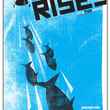

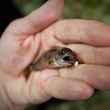















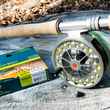






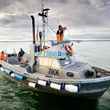
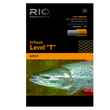
Comments
Aileen Lane replied on Permalink
Ah yes, I have reeled in before only to discovered a missing fly. Makes me want to smack myself on the head. I definitely try to check it often!
Chad Shmukler replied on Permalink
It certainly happens more often with double or triple fly rigs (terminal fly lost) but even with single fly rigs, where you can typically feel that the fly has been lost when casting, it still happens to me from time to time.
Bert replied on Permalink
Very good post and I am guilty, guilty, guilty! And lazy, too, because I don't want to strip in 30 feet of fly line and hold it while messing with my terminal tackle just to feed it all back out again. But I am working on a solution using a trick cast from the two-handed world called a Snap C or a Snap T (google it). While on the dangle with all the line hanging below you, simply lift your rod tip a few feet and then vigorously snap it straight down as though trying to slap the surface of the water. If you do it right, the line will come sailing straight back upstream over you. With practice you can adjust the energy of your cast so that only the leader drapes across your hat. Even better if you grab the leader out of the air or for real applause grab it with your teeth.
jon conner replied on Permalink
I'm on your page all the way, no way can you be too careful while fishing, the rest of the time, not so much!
JC
Todd Tanner replied on Permalink
"Put simply, I believe things generally tend to work out, and that obsessing over details is a waste of time."
Here's your new trip planning song: http://www.youtube.com/watch?v=EYi5aW1GdUU
Pages